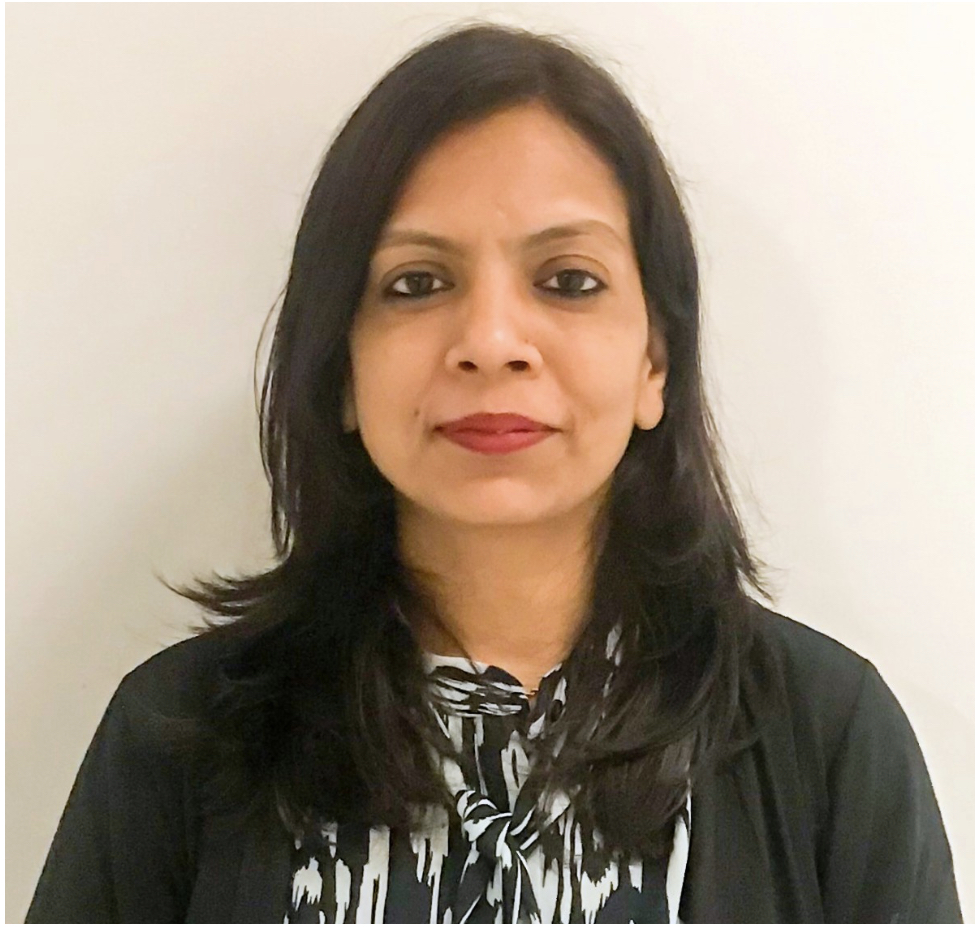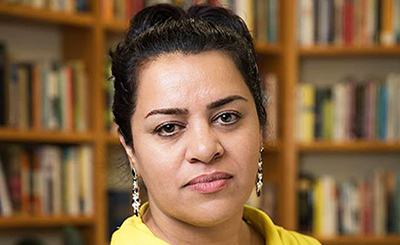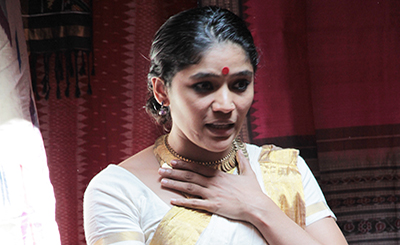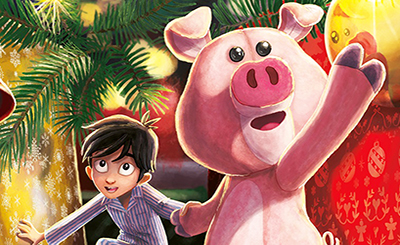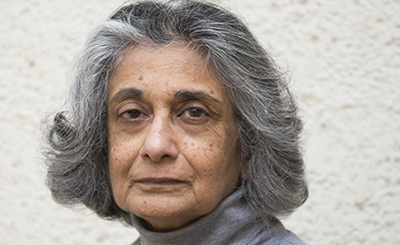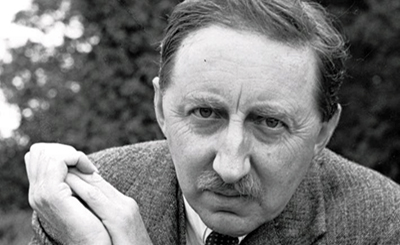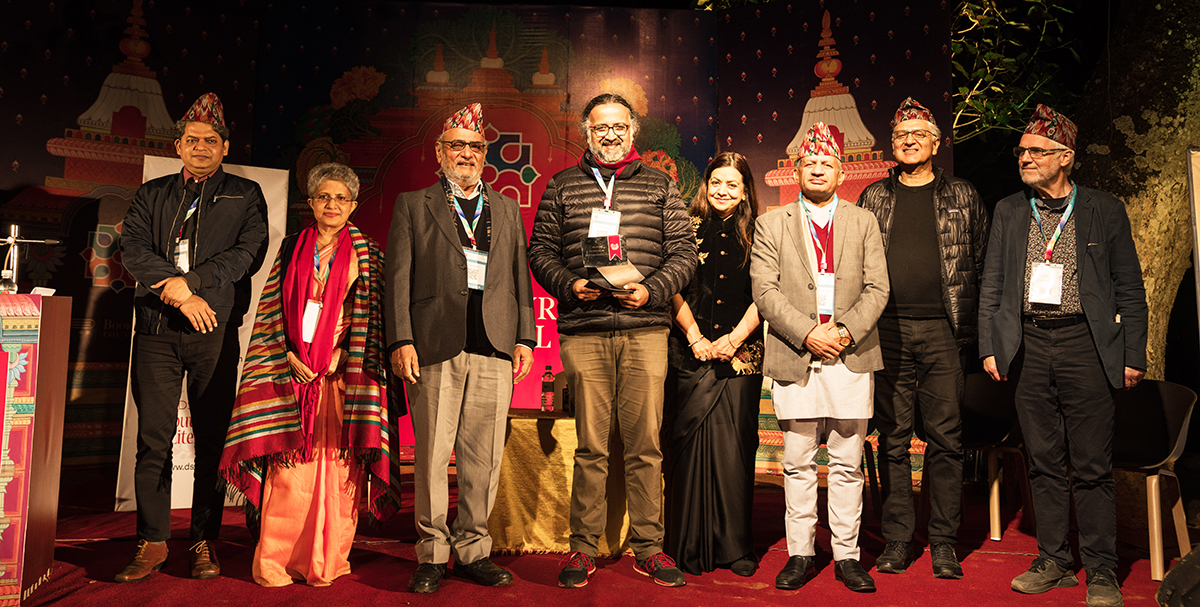
(From left) Rifat Munim, Carmen Wickramagamage, Harish Trivedi, Amitabah Bagchi, Surina Narula, founder of the DSC Prize for South Asian Literature, Pradeep Gyawali, Minister of Foreign Affairs of Nepal, Kunda Dixit and Jeremy Tambling
The five-member jury for the 2019 DSC Prize for South Asian Literature comprised literary figures from across South Asia — India, Sri Lanka, Nepal and Bangladesh. It included Harish Trivedi, Carmen Wickramagamage, Jeremy Tambling, Kunda Dixit and Rifat Munim.
Trivedi, Jury Chair, is former Professor of English at the University of Delhi. He was visiting professor at the universities of Chicago and London. He has lectured at various universities in the USA, Canada, South America, the UK, Europe, China, Japan, South-East Asia and Australia. He is the author of Colonial Transactions: English Literature and India (Calcutta 1993; Manchester 1995), and has co-edited Interdisciplinary Alter-natives in Comparative Literature (New Delhi 2013); Literature and Nation: Britain and India 1800-1990 (London 2000); Post-colonial Translation: Theory and Practice (London 1999); and Interrogating Post-colonialism: Theory, Text and Context (Shimla 1996; rpt. 2000 and 2006). He has contributed to the Cambridge Companion volumes on Gandhi and Kipling (both published 2011) as well as Tagore (forthcoming). He also writes in Hindi and translates from Hindi, Urdu and Sanskrit. Currently, he is a contributing editor of an international project based in Stockholm for writing a history of World Literature.
Wickramagamage is Professor in English and Head of the Department of English at the University of Peradeniya, Sri Lanka. Her translation of a Sinhala novel into English, Sunethra Rajakarunanayake’s Podu Purushaya, translated into English as Metta: A Story about Love, won the State Literary Award for the Best Translation of a Work of Fiction into English.
British writer and critic Tambling was Professor of Comparative Literature at the University of Hong Kong until 2006 and Professor of Literature at the University of Manchester until December 2013. Currently, he is Professor of English at the University of Social Sciences and Humanities, Warsaw (2019). His areas of interest include a wide range of literary greats and subjects — from Dante to Dickens, anachronism to allegory and Nietzsche to nihilism. He is the author, most recently, of Dickens, Nicholas Nickleby, and the Dance of Death (London: Routledge, 2019).
Dixit is co-publisher at Himalmedia and editor of Nepali Times in Kathmandu. He graduated from Columbia University in New York and worked for the BBC before joining Inter Press Service as Asia-Pacific Editor. He also helped set up Panos South Asia that works in the areas of policy debate and environment and development issues. He is visiting faculty at Kathmandu University and is the author of Dateline Earth and the trilogy of photo books on the Nepal Conflict: A People War.
Munim is a bilingual writer, essayist, and translator. He is the literary editor of Dhaka Tribune, a leading English daily in Bangladesh. His books include a Bengali translation of Doris Lessing’s The Grass is Singing (Oitijjo, 2010) and Bangladesh in Wikileaks (Daily Star Books, 2013), a book on the US embassy’s cables about Bangladesh’s politics released by Wikileaks.
In this interview, the jury members share how they went about selecting the winner out of the 90 books that were received this year.
Shireen Quadri: About 90 odd entries were received this year for the DSC Prize for South Asian Literature. Tell us about the process of whittling down 15 novels for the sterling longlist?
Harish Trivedi: It was punishing to have to read 90 novels in about as many days but it also felt heroic, for not too many persons in the world have read 90 novels in a lifetime. In a variation on what Lord Bacon said in the 16th century (that “some books are to be tasted, others to be swallowed, and some few to be chewed and digested,"), I advised my fellow jurors that some of these novels were to be read like newspapers, some others like magazines, and a few would stop us in our tracks and grab us by the throat, whereupon one had to surrender and pay full and unhurried attention.
I also made it a point to go over each page of each novel, for some writers come on strong in the beginning, some in the middle before falling away, and some have a trick or two up their sleeve for the end. One of the novels this year had a penultimate chapter which is entirely in a language that is not English and in a script that is not roman but Perso-Arabic. Oh! the games these creative guys play, and the rocks they throw at the unwary reader!
Shireen Quadri: The longlist stood out for its diversity. It comprised three works of translation (from Tamil, Malayalam and Bengali), seven women authors and seven debut novelists. In what ways do these different novels foreground the quintessential South Asian experience, telling a story that resonates with the broader realities of the region?
Harish Trivedi: The ‘quintessential’ is not a given. For me, it is the sum of everything put together at any moment and thus an essence ever being distilled.
Yes, it was a richly diverse list, and as I said in the Jury Chair’s statement at its announcement, it was a list which was ‘diverse and inclusive both intrinsically and by design.’ To spill a few beans, all of us jurors agreed quickly on the best six books, and then on the next three, without a thought for diversity which must have come in unbidden! But we still had six slots left, which we filled by being as broadly and diversionally diverse as we could be. So, much of the diversity was inherent in the 90 entries themselves and some more came about through our accentuating it.
Carmen Wickramagamage: The inclusion of the novels in the longlist was not based necessarily on their responsiveness to the realities of the region but it is undoubtedly the case that the ‘novel’ is the genre best suited to take into account or respond to the ‘realities’ — social, political, cultural and economic — of the region. While the ‘South Asia’ that a writer may imagine is as much in the mind as something ‘evident’ to all on the ground, no writer of fiction, particularly the novel, can create a work completely divorced from those realities whether they are signaled explicitly or only hinted at obliquely. And, of course, ‘our’ ability to detect these references would also differ from one juror to another depending on how attuned we are to those ‘realities’ or the ‘reality’ being hinted at. What characterises South Asia to me is its diversity — be it in the ‘realities’ or modes of story-telling — and I saw that in the entries for this year’s DSC Prize. I looked for a certain ‘ring’ of truth, a sincerity in the telling, and a touch of originality and innovation in telling it.
Jeremy Tambling: I do not know what is meant by 'the quintessential South Asian experience', but I do know that I was amazed at the variety of lives, and political issues, and women's issues, that were covered in the novels on the long list. They impressed me with their urgency (that politics matters) and with the variety of situations described. There was a strong sense of different parts of South Asia mattering, and of the situations differing so that it is not possible to generalise about them. But the standard was fully up to that of the best fiction produced today.
Kunda Dixit: The dilemma of writing in English about South Asia for South Asians is that although it may be the lingua franca, it is not an indigenous language. So, the voice of novels written in English, by definition, sounds foreign. South Asian writers have tried to transcend this, using diverse methods which we saw in many of the novels in the longlist. Something is always lost in translations of fiction written in regional languages, although they retain the authenticity of storytelling. In the long list, we have a Malayalam author writing about a neighbouring South Asian country, Sri Lanka. The Bengali novel had writing that was starkly simple, and if there was a poll the author would have probably won the audience choice in Pokhara. The reason was that the plot of his novel about Naxalites was so close to Nepal’s own reality of the Maoist insurgency. So, just imagine the excitement at the Nepal Literature Festival if the novel had been translated from Bengali directly into Nepali, and if the panel was conducted with Nepali translation from Bengali instead of Hindi.
Rifat Munim: Each of the novels in the longlist tells a different story. On the one hand, they as a whole represent the many different social, political realities of South Asia and on the other, they demonstrate how South Asian writers constantly re-invent the existing South Asian literary traditions to create their own styles and traditions with new expressions.
Shireen Quadri: What were some of the major strands, motifs or overarching themes that ran through these novels? How distinct were each of these stories from the other?
Harish Trivedi: Each work of imagination is inevitably different from another. That said, many writers in English from South Asia, especially those living abroad, feel an urge to narrate the nation that they have left behind and which they fancy they can see more clearly and whole from a distance. This may be called the Curse of Rushdie. Many novels written in English also feel obliged to be topical and ‘relevant’; these are more content-driven and sometimes come close to being ‘non-fiction by other means,’ to borrow a wonderful phrase from one of our 90 novelists. And while some of the debut novels are fresh and autobiographically fragrant, as if just plucked from the bough, we can glimpse in some others the evidence of courses the authors have done in Creative Writing and the grooming and shaping of the manuscript by publisher’s editors.
Carmen Wickramagamage: If we are only speaking of the longlist (and not all the 90 entries), certainly, ‘religion’ (whether as personal belief or politicised entity) remained a major theme (and how could it not, given how much it is in the foreground in South Asia?) but also politics (nationalist and dissenting) and family — with identity, gender, sexuality, as intersecting or cross-cutting sub-themes. Of course, in treating or handling these common/shared themes, the writers differed one from the other — at least those who made the final cut for the longlist. In other words, as regards the most common themes, there were no surprises but in their handling, including the use of novel techniques for making stories out of them, there were many surprises.
Jeremy Tambling: The stories differed and the different imaginations that produced such situations were very evident. People were writing fiction that was not routine, or predictable, and it all drew on both historical and modern themes. I was very struck by how many novels quoted texts from the past — historical events and poetry mattered to the writers.
Kunda Dixit: What amazed me was how South Asian authors have picked on ‘burning issues’ of the day throughout our region: gender, patriarchy, violence against women, inequity, marginalisation, state-sponsored structural violence, terrorism and the rise of fascism. It is almost as if the authors have found the mass media totally inadequate in conveying the reality of the Subcontinent, and have used the medium of fiction to get closer to the truth.
Rifat Munim: It goes without saying that the longlisted novels are different from each other in terms of tone, style and theme. While some of them are highly experimental and deeply layered, some others are written in classically conceived realistic traditions. One of them even brings eco-critical perspectives to the fore.
Shireen Quadri: While writers from countries like India, Pakistan and Bangladesh have dominated the list so far, this year also saw an American on the longlist — Tova Reich for Mother India, which recounts the adventures in India of three Jewish women through the voice of Meena, a middle-aged lesbian from Brooklyn, who runs a travel business in Mumbai. What was your reading of the novel as it came from someone with little or no South Asian connection?
Harish Trivedi: Besides numerous novels from India and over a dozen from Pakistan, we had two novels each from Bangladesh and Sri Lanka and a third one about Sri Lanka by an Indian. I was interested to find that our jurors, who were from five different countries, were not making many concessions for their compatriots! There were no entries from Nepal or Myanmar etc — perhaps because the British failed to colonise and anglicise those countries properly! The literary festival in Pokhara where the winner of the DSC prize was announced was conducted largely in Nepali, something we rarely come across in India.
Besides Tova Reich, we had three other novels from the US and Canada by writers with no ethnic connection with South Asia, and this is a new and welcome trend. South Asia is now everywhere thanks to our migrants to the West; it is in the face of the original inhabitants of those countries and can no longer be ignored. Some of this Western interest in India is orientalism redux, for example, in the scenes set in Banaras towards the end of Reich’s novel. But then we had another novel, this time by an Indian writer, in which, too, Banaras was presented as being stereotypically holy. So, the West, too, is everywhere and has been for a while.
Carmen Wickramagamage: “South Asia” as label is, maybe, new but the region is old and has always been international or global in its outlook and outreach. Hence, I for one was very happy that the DSC Prize did not draw arbitrary lines between ‘who’ qualifies to be a ‘South Asian’ writer and who does not. What is important is how creatively and imaginatively, including that ‘ring’ of truth and sincerity, that a novel taking South Asia as its backdrop responds to what constitutes South Asia—its social, cultural and political make-up and its story-telling traditions. I, for one, am of the opinion that there is no need to be insular. The region has always been welcoming of diverse peoples, opinions and cultures; let it continue to be that way without posing “gate-keepers” at its doors, even if what is under discussion is a “literary” South Asia.
Jeremy Tambling: It would be unfair to comment on any one novel, but I do not think it necessary to be South Asian to write about South Asia: cultures mix, and different cultures can comment on each other, with insights which people from the home culture may miss, because they seem so obvious. Many novels touched on sexual diversity, and that was also refreshing, and a sign of new thinking which went beyond just being fashionable.
Kunda Dixit: Although none of those non-South Asia authors made it to the shortlist, I must say that in terms of craft and cause, the ones written by outsiders did justice to plot, relevance, local details and raised important issues. But one did get the feeling that the novels were not really written for a South Asian audience, but were taking South Asian issue to a larger global readership. This was also true of most of the other English novels by South Asians themselves, but it was less glaring.
Rifat Munim: A few of the major thematic strands running through them include women’s issues, social-political-historical realities and diasporic experiences of writers of South Asian origin.
Shireen Quadri: Since the longlist was so interesting, settling down on the shortlist of six novels would have been quite a task. What was your approach to the selection? Did you have particular aspects of the craft of storytelling, or themes they dealt with, on mind? What worked in the favour of the novels that made it to the shortlist?
Harish Trivedi: The two aspects you mention, traditionally called the form and the content, are indeed the main points of interest in every novel, but in each novel the degree to which one symbiotically nourishes the other is intriguingly different. Our jury naturally brought our own individual predilections to the selection, so in the end I put in the top preference of each of the five jurors, and then a sixth one because one of us turned out to have two top preferences! It was all very democratic.
Shireen Quadri: Finally, the winner. What edge did Amitabha Bagchi's novel Half the Night is Gone have over other titles? What was your reading of the novel? In what ways do you see the novel relevant in the new India, even though it is set in the emerging new India in the first half of the 20th
century?
Harish Trivedi: Well, the first thing to say is that any one of the six novels could have won and been a deserving winner. It was after 150 minutes of lively discussion of all the six novels that I called for the final vote and a clear and strong decision emerged in favour of Amitabha Bagchi.
Speaking for myself, I found Half the Night is Gone immediately attractive as a deeply local and culturally grounded text, and it proved as rewarding to read as it was challenging. It is artfully constructed in a consciously classical manner, it embeds numerous nuances in its triple layer-upon-layer patterning, and it crosses over from English to engage substantially with three other languages and sensibilities: Hindi, Urdu and Sanskrit. Literary texts, both new and hallowed from these languages, are cited in the original version, followed by translations and even end-notes. So much so that it has a Hindi novelist as a central character, who offers an extensive diagnostic commentary, in a tone both trenchant and rueful, on our postcolonial condition as it has evolved over the last half century. It feels like a Hindi novel written in English, and stages a running debate on religion and secularism with gender playing a part in it, a kind of exploration it may not have been possible for Indian English left to its own thin cultural resources to even dream of anchoring. The novel spans three generations of modern India and a wide range of thematic concerns. Each re-reading of this novel reveals new thematic inter-connections and intricacies of meaning.
After it won the prize, I saw that a journalist described it as the Great Indian Novel, and while it is not quite that, for no novel can plausibly be termed that, it is clear that Bagchi achieves more because he attempts more.
More from The Byword
Comments
*Comments will be moderated



